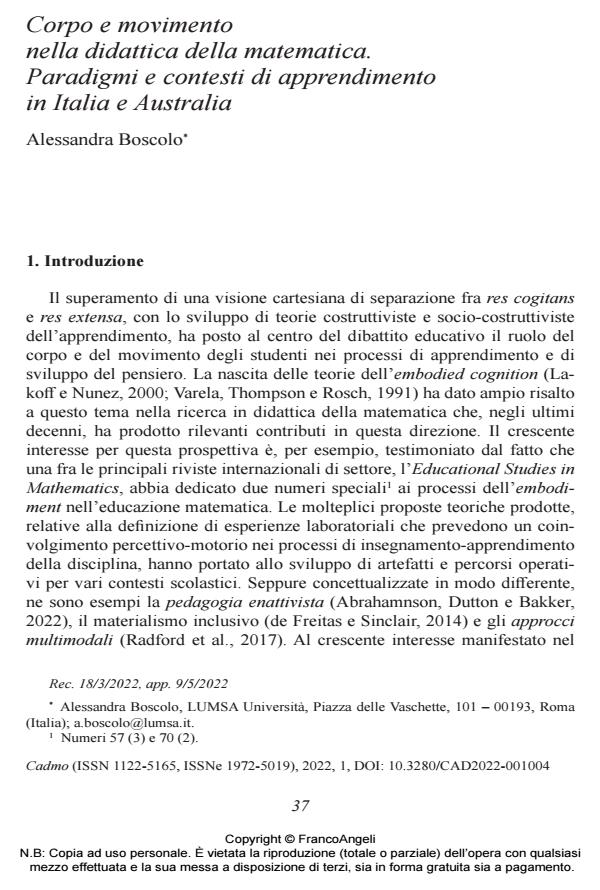Corpo e movimento nella didattica della matematica. Paradigmi e contesti di apprendimento in Italia e Australia
Titolo Rivista CADMO
Autori/Curatori Alessandra Boscolo
Anno di pubblicazione 2022 Fascicolo 2022/1
Lingua Italiano Numero pagine 26 P. 37-62 Dimensione file 268 KB
DOI 10.3280/CAD2022-001004
Il DOI è il codice a barre della proprietà intellettuale: per saperne di più
clicca qui
Qui sotto puoi vedere in anteprima la prima pagina di questo articolo.
Se questo articolo ti interessa, lo puoi acquistare (e scaricare in formato pdf) seguendo le facili indicazioni per acquistare il download credit. Acquista Download Credits per scaricare questo Articolo in formato PDF

FrancoAngeli è membro della Publishers International Linking Association, Inc (PILA)associazione indipendente e non profit per facilitare (attraverso i servizi tecnologici implementati da CrossRef.org) l’accesso degli studiosi ai contenuti digitali nelle pubblicazioni professionali e scientifiche
The implementation of educational innovations and research findings is significantly influenced by cultural and contextual factors. In this paper, we will present a study carried out in Italy and Australia on the introduction at school of Mathematics active, bodily experience learning activities. Com paring two different teaching cultures, we revealed the presence of specific contextual features and cross-cultural characteristics, which can lead to a better understanding of those activities and their possible implementation. Thanks to indepth interviews of a number of experts in Mathematics edu- cation in both countries, it was possible to observe emerging differences in how those activities are conceived and could be declined in school practice in the two different contexts. Some cultural dissimilarities stemming from the Mathematics and Mathematics education cultural traditions of the two states under consideration, which also figured in their educational policies, are also discussed.
Parole chiave:laboratorio di matematica, enactive learning, hands-on math- ematics, implementation, embodied cognition.
Alessandra Boscolo, Corpo e movimento nella didattica della matematica. Paradigmi e contesti di apprendimento in Italia e Australia in "CADMO" 1/2022, pp 37-62, DOI: 10.3280/CAD2022-001004